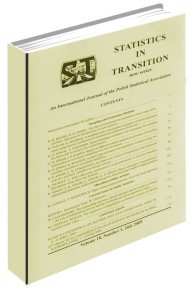Changing Mortality Distribution in Developed Countries from 1970 to 2010: Looking at Averages and Beyond Them
Changing Mortality Distribution in Developed Countries from 1970 to 2010: Looking at Averages and Beyond Them
Author(s): Adam SzulcSubject(s): Economy
Published by: Główny Urząd Statystyczny
Keywords: mean length of life;mortality distribution;poverty and inequality indices
Summary/Abstract: The methods typically developed in income inequality and poverty research are employed to observe changes in life spans distribution in 35 developed countries. The analyses are performed at two levels, using the same methods when possible: i/ taking the countries as the units with a mean length of life being a single parameter representing the distribution, ii/ utilizing the country life tables (taking people as the units) in order to compare other than mean length of life attributes of mortality distribution. Increasing divergence in the mean length of life across the countries is due to growing distance of the countries below the median, mainly the post-communist ones, to the upper half. The comparisons of the within-country distributions of ages at death by means of the Kullback-Leibler divergence provides similar results. However, poverty and inequality indices calculated at this level yield opposite conclusions. Hence, most of the between-country variation might be attributed to the variation in the mean length of life while the changes in within-country inequality reduced this effect. At the same time, huge alterations in the within-country mortality rankings can be observed. Australia, Japan, Taiwan, Austria and Luxembourg may be said to be the “winners” while most of the post-communist countries are among the “losers”.
Journal: Statistics in Transition. New Series
- Issue Year: 17/2016
- Issue No: 3
- Page Range: 467-496
- Page Count: 30
- Language: English

